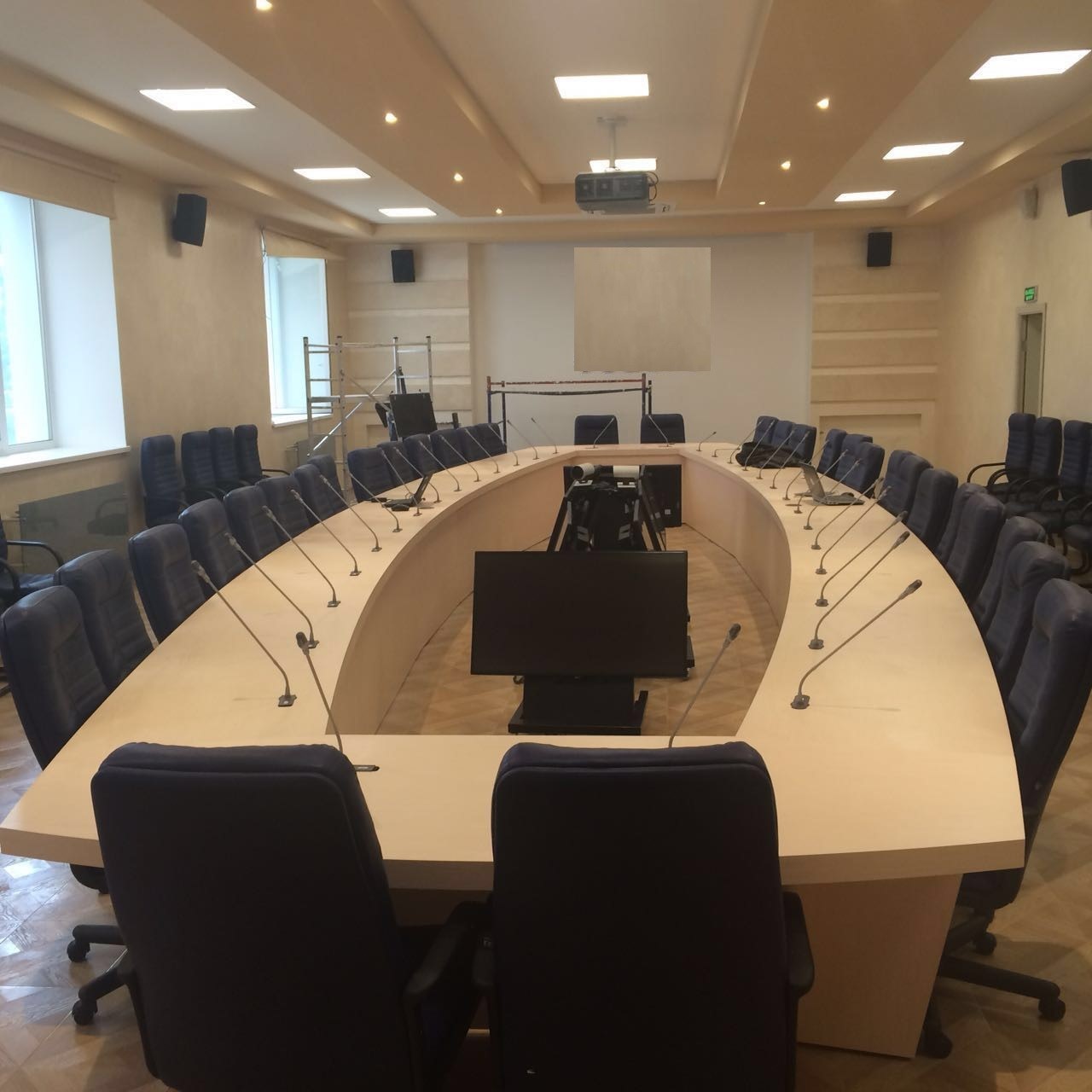Atypical organization of videoconferencing in a large chemical company

For quite a long time, the history of the VKS very much resembled some archaeological processes. It is quite hard for people “from the street” to explain at least why you need to buy servers for video conferencing and what difficulties are there inside the organization. In short:
- Large companies like to communicate in video, and in large quantities.
- They do not like to let traffic through any unencrypted channels.
- Best of all, if the traffic goes through its physical corporate network, without looking into the Internet.
- All video processing and transmission devices must be local.
- Usually, from 10 to 50 video streams come to one node (by the number of conference participants), therefore intermediate servers are needed, which will glue one stream from them or mix it up in some other way.
- You need to support the zoo of devices and vendors plus connect people from mobile phones and tablets.
- Each vendor has its own standards, and not supporting each other has a commercial position.
It became much easier after virtualization of video conferencing: in particular, Cisco Meeting Server appeared, compatible not only with Tsiska, but also with everything that is on the market, except for especially ancient models.
There is a large domestic chemical company with enterprises throughout Russia. A wide geographical presence implies that it is necessary to communicate a lot and often, because you will not get hurt by everyone. The fact that the production of chemical components is almost like the production of explosives, just a little different, suggests that it is better not to communicate through open channels. Significance for our country suggests again that chasing data through the servers of a potential adversary (however potential it may be) is an idea so-so.
Bottom line - they have their own network, their own videoconferencing. Everything went well on the old hardware and once the network was raised, until they found that the capacity of the multipoint conferencing servers was running out. They exploit videoconferencing very actively.
Situation
Almost all infrastructure is in Cisco. There are two solutions to the problem: the outgoing Cisco Television Presentation Server and the new Cisco Disco Meeting Server. According to CMS, this chemical plant was one of the first implementations in Russia (not counting the different running-in and tests). Most of our deployments before and after are one server node, possibly with redundancy. And here everything is an order of magnitude more complicated: the main core nodes are three, these are territorially distributed nodes in different places of the geography of a group of companies.
There is integration with the unified communications system (this is the name of Skype). There is a connection of external contractors from the browser via a hyperlink, ciskovsky native. Before that, this was not.
In the existing infrastructure it was impossible to expand, but it was necessary to buy new equipment and new licenses, it was expensive. Integration with Skype 2015 is questionable. It is not officially supported by Cisco for the existing structure. Would work informally, but without support. Plus there is the issue of new licenses for all this. Guest access link was missing. Distribution you see. A group of companies must survive in the event of loss of nodes, so the situation “city has fallen out” is laid everywhere.
The easiest way was to extend the current decision, but it was necessary to make a new one. At least because multipoint servers came to the end of sale stage. That is, these servers had to turn into a pumpkin in a couple of years. Putting the outgoing decision did not make sense.
Here is the architecture before and after the upgrade:

About three nodes - one each in Moscow and Orel. In Orel, the CMS virtual machine replaced the previously installed Cisco Telepresence Server virtual machine. And in Nizhny Novgorod, there are three CMS machines: two multipoint conferencing servers and one recording server (recorder).
Channels - internal corporate channels (100 Mbit or 1 Gigabit, redundancy).
The terminals are at least 2/3 of the Tsisco Telepresence (current equipment from 2011 and more modern) and about a quarter of the terminals of the older, more Thandberg (Tsisko is their ideological heir: just bought their company entirely).
For integration, it is important that the terminal equipment does not change at all.
Our follow-up support turned out to be almost complete, except for hardly noticeable artifacts on the old MHR Tandberg terminals due to the extremely specific H.264 RCDO protocol, designed to compensate for poor performance in the HD720p.
Total
There were 10 HD ports in Moscow, 24 in N. Novgorod, and 10 in Orel, for a total of 44 ports before the upgrade. After modernization, nobody in Moscow and N. Novgorod removed the ports (34 old ports), and dozens of new ones were added to them.
Power per port is easily increased simply by giving away more resources to virtual machines. It was, say, 10 cores. When it turned out that this was not enough due to the growing number of conferences held, they simply expanded the resources of the CMS virtual machine. And if necessary, you can expand further!
Admins - the same. Those who ran before, just poduchili CMS and manage VKS-network and now.
The old Telepresence was left in parallel: it works on two points out of three, where hardware servers (physical devices) are located, nobody removes them, they are a reserve in case of emergency.
